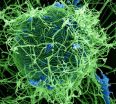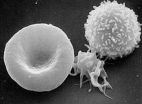(Press-News.org) WASHINGTON, D.C., August 14, 2014 – Although replicating important findings is essential for helping education research improve its usefulness to policymakers and practitioners, less than one percent of the articles published in the top education research journals are replication studies, according to new research published today in Educational Researcher (ER), a peer-reviewed journal of the American Educational Research Association.
"Facts Are More Important Than Novelty: Replication in the Education Sciences," by Matthew C. Makel of Duke University and Jonathan A. Plucker of the University of Connecticut, analyzes the complete publication history of the current 100 education journals with the highest five-year "impact factor" (an indicator of how often a given journal's articles are cited in other scholarly work), finding that only 0.13 percent of published articles were replications. http://www.aera.net/Newsroom/RecentAERAResearch/FactsAreMoreImportantThanNoveltyReplicationintheEducationSciences/tabid/15613/Default.aspx
Contrary to findings in medicine, but similar to psychology, the majority of education replications successfully replicated the original studies. Nearly 68 percent (67.4 percent) of the replications successfully replicated the findings of the original study, 19.5 percent had mixed results (supporting some, but not all, findings), and 13.1 percent failed to replicate any of the original findings.
However, replications were significantly less likely to be successful when there was no overlap in authorship between the original and replicating articles. Replication studies that were conducted by completely new research teams were found to be successful 54 percent of the time. When replications were conducted by the original authors in the same publication as the original findings, 88.7 percent were successful. When replications were in a new publication, but at least one author was on both the original and replicating studies, 70.6 percent of replications were successful.
Overall, about half (48.2%) of all published replications are done by the research team that completed the original study.
The shortage of replication studies receives attention across research fields. A 2005 review of highly cited medical publications found that only 44 percent of replications produced results similar to the original study. A 2012 study by the same research team of the publication history of the top 100 psychology journals found that only 1.07 percent of publications were replications.
Although the percentage of education replications is quite small, it is increasing. Currently, about one in 500 studies are replications, an increase from one in 2,000 in 1990.
"The desire to distinguish 'truth from nonsense' is a constant struggle within science, and the education sciences are no exception," said co-author Jonathan A. Plucker. "The need to increase replication is apparent and permeates all levels of education research, to provide both confidence in our collective work and disincentives for misconduct."
"If education research wants to be relied upon in the real world, conducting independent replication is essential," said co-author Matthew C. Makel. "Replications of important research findings will lead to stronger and more accurate policy and practice recommendations."
The authors identified eight reasons, or biases, that help explain the lack of replication in the education research field. These include submission bias, funding bias, editor/reviewer bias, journal publication policy bias, hiring bias, promotion bias, journals-analyzed bias, and "novelty equals creativity" bias. (See page 3 of the study for details about these factors.)
The authors recommend several steps for increasing the rate of replication in education research. These include revising journal editorial policies to explicitly encourage submission of replication studies, creating a new article type in journals for replications, adopting universal standards for conducting replications, and introducing replication training into graduate and undergraduate student projects.
INFORMATION:
The AERA Code of Ethics adopted in 2011 speaks to standards for reporting on research and data sharing to allow for replication. AERA is turning its attention to ways that it and its journal publications program can further support and encourage replication studies. The decision by AERA in 2013 to publish AERA Open as an open-access research journal provides one vehicle to encourage the publication of peer-reviewed replication studies.
Video
Co-author Matthew C. Makel discusses key findings. http://youtu.be/zIUQK1yD95M
About the Authors
Matthew C. Makel is a gifted education research specialist at the Duke University Talent Identification Program.
Jonathan A. Plucker is Raymond Neag Professor of Educational Leadership at the University of Connecticut.
About AERA
The American Educational Research Association (AERA) is the largest national professional organization devoted to the scientific study of education. Founded in 1916, AERA advances knowledge about education, encourages scholarly inquiry related to education, and promotes the use of research to improve education and serve the public good. Find AERA on Facebook and Twitter.
This release is available online: http://www.aera.net/Newsroom/NewsReleasesandStatements/StudyDetailsShortageofReplicationinEducationResearch/tabid/15612/Default.aspx.
Study details shortage of replication in education research
2014-08-14
ELSE PRESS RELEASES FROM THIS DATE:
PTSD can develop even without memory of the trauma
2014-08-14
Philadelphia, PA, August 14, 2014 – There are many forms of memory and only some of these may be critical for the development of posttraumatic stress disorder (PTSD), reports a new study by researchers at the University at Albany and the University of California Los Angeles. Their findings, published in the current issue of Biological Psychiatry, suggest that even with no explicit memory of an early childhood trauma, symptoms of PTSD can still develop in adulthood.
There are case reports of people who have experienced terrible life events that resulted in brain damage, ...
New Irish research sheds light on how aspirin works to reduce cancer deaths
2014-08-14
Researchers have discovered that women who had been prescribed aspirin regularly before being diagnosed with breast cancer are less likely to have cancer that spread to the lymph-nodes than women who were not on prescription aspirin. These women are also less likely to die from their breast cancer.
The study of Irish patients funded by the Irish Health Research Board and Irish Cancer Society and published by the American Association for Cancer Research in the Journal, Cancer Research, analyses records from the National Cancer Registry Ireland (NCRI), and prescription ...
New non-invasive technique controls size of molecules penetrating the blood-brain barrier
2014-08-14
New York, NY—August 14, 2014—A new technique developed by Elisa Konofagou, associate professor of biomedical engineering and radiology at Columbia Engineering, has demonstrated for the first time that the size of molecules penetrating the blood-brain barrier (BBB) can be controlled using acoustic pressure—the pressure of an ultrasound beam—to let specific molecules through. The study was published in the July issue of the Journal of Cerebral Blood Flow & Metabolism.
"This is an important breakthrough in getting drugs delivered to specific parts of the brain precisely, ...
Workaholism: The addiction of this century
2014-08-14
In spite of the many positive aspects of work, some people are unable to detach from it – working excessively and compulsively. These are called workaholics.
Postdoctoral Fellow Cecilie Schou Andreassen and colleagues from the Department of Psychosocial Science at the University of Bergen (UiB) in Norway has been the first to assess workaholism in a nationally representative sample.
According to Schou Andreassen, the "workaholism" concept has been studied by scholars for nearly 45 years. Still, reliable statistics on the prevalence of workaholism is hard to find. The ...
EARTH Magazine: La Brea climate adaptation as different as cats and dogs
2014-08-14
Alexandria, Va. — The La Brea tar pits in downtown Los Angeles are a famous predator trap. For every herbivore, a dozen or more carnivores — saber-toothed cats and dire wolves chief among them — are pulled from the prolific Pleistocene fossil site. In fact, the remains of more than 4,000 dire wolves have been excavated, along with more than 2,000 saber-toothed cats. The sheer number of fossils allows researchers to ask population-level questions about the climate and environment as well as how these animals evolved.
Now, two new studies focusing dire wolves and saber-toothed ...
Ebola outbreak highlights global disparities in health-care resources
2014-08-14
The outbreak of Ebola virus disease that has claimed more than 1,000 lives in West Africa this year poses a serious, ongoing threat to that region: the spread to capital cities and Nigeria—Africa's most populous nation—presents new challenges for healthcare professionals. The situation has garnered significant attention and fear around the world, but proven public health measures and sharpened clinical vigilance will contain the epidemic and thwart a global spread, according to a new commentary by Anthony S. Fauci, M.D., director of the National Institute of Allergy and ...
New blood: Tracing the beginnings of hematopoietic stem cells
2014-08-14
Hematopoietic stem cells (HSCs) give rise to all other blood cell types, but their development and how their fate is determined has long remained a mystery. In a paper published online this week in Nature, researchers at the University of California, San Diego School of Medicine elaborate upon a crucial signaling pathway and the role of key proteins, which may help clear the way to generate HSCs from human pluripotent precursors, similar to advances with other kinds of tissue stem cells.
Principal investigator David Traver, PhD, professor in the Department of Cellular ...
Novel chip-based platform could simplify measurements of single molecules
2014-08-14
Researchers at UC Santa Cruz have developed a new approach for studying single molecules and nanoparticles by combining electrical and optical measurements on an integrated chip-based platform. In a paper published July 9 in Nano Letters, the researchers reported using the device to distinguish viruses from similarly-sized nanoparticles with 100 percent fidelity.
Combining electrical and optical measurements on a single chip provides more information than either technique alone, said corresponding author Holger Schmidt, the Kapany Professor of Optoelectronics in the Baskin ...
Stem cells in the skeletal muscle promote the regeneration of severe nerve peripheral injury
2014-08-14
A research group at the muscle physiology and cell biology unit, the Tokai University School of Medicine, Japan, led by Dr. Tetsuro Tamaki, have developed the stem cell isolation method from the skeletal muscle, termed skeletal muscle-derived multipotent stem cells (Sk-MSCs), which can differentiate into Schwann and perineurial/endoneurial cells, and vascular relating pericytes, endothelial and smooth muscle cells in the damaged peripheral nerve niche. Application of the Sk-MSCs in the bridging conduit of the long nerve gap injury resulted favorable axonal regeneration ...
Up-regulation of neuronal alpha-1 adrenoceptors after peripheral nerve injury
2014-08-14
In a Perspectives paper published in Neural Regeneration Research (Vol. 9, No. 14), Professor Peter Drummond speculates about neuronal changes that might contribute to chronic pain after peripheral nerve injury. Professor Drummond and co-workers at Murdoch University, Perth Western Australia, discovered recently that the expression of α1-adrenoceptors increases on pain-signalling nerve fibers that survive peripheral injury. As these receptors boost neural excitability, an increase in their expression could intensify pain. After tissue injury, resident cells and other ...


